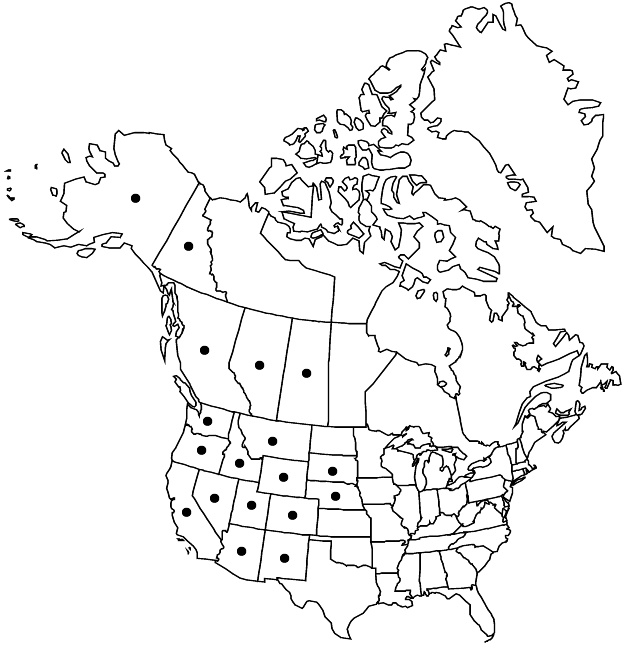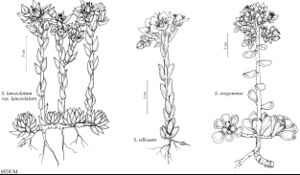Sedum lanceolatum
Ann. Lyceum Nat. Hist. New York 2: 205. 1827,.
Herbs, perennial, tufted, glabrous. Stems rootstocks, decumbent and ascending, branched, (sometimes papillose), bearing terminal rosettes and above ground shoots. Leaves (not easily detached), alternate, spreading-erect to erect or ascending, sessile; blade dull gray-green or bluish green, green, or reddish green, often glaucous, lanceolate, elliptic-lanceolate, or elliptic-ovate, subterete, 4.2–13 × 1.5–3.5 mm, base very short-spurred, base of withered blade at times becoming scarious, apex obtuse or obtusely apiculate, (surfaces papillose). Flowering shoots erect, simple or branched, 3–18 cm; leaf blades elliptic-lanceolate, base short-spurred; offsets not formed. Inflorescences cymes, 5–25-flowered, (1–)3(–6)-branched; branches ascending, spreading to erect, or recurved, forked; bracts similar to leaves. Pedicels absent or to 3 mm. Flowers 5-merous; sepals erect, connate basally, pale green to yellow-green, ovate or lanceolate, equal, 2–5 × 1–2 mm, apex acute or, rarely, obtuse, (often papillose); petals widely spreading from suberect base, distinct, canary to golden yellow, lanceolate, elliptic-lanceolate, or linear-lanceolate, canaliculate, 6–9.2 mm, apex acute to acuminate with minute mucronate appendage; filaments yellow; anthers yellow, sometimes suffused with red; nectar scales deep yellow to yellow-green, obovately square. Carpels erect in fruit, basally connate, brown. 2n = 16.
Distribution

w, wc North America.
Discussion
Varieties 2 (2 in the flora).
Sedum lanceolatum forms offsets in the axils of rosette leaves. The mature carpels have divergent beaks and narrow lips along the adaxial suture.
Selected References
None.
Key
| 1 | Rosette leaf blades 4.2-9 × 1.5-2.5 mm. | Sedum lanceolatum var. lanceolatum |
| 1 | Rosette leaf blades 8-13 × 3-3.5 mm. | Sedum lanceolatum var. nesioticum |
